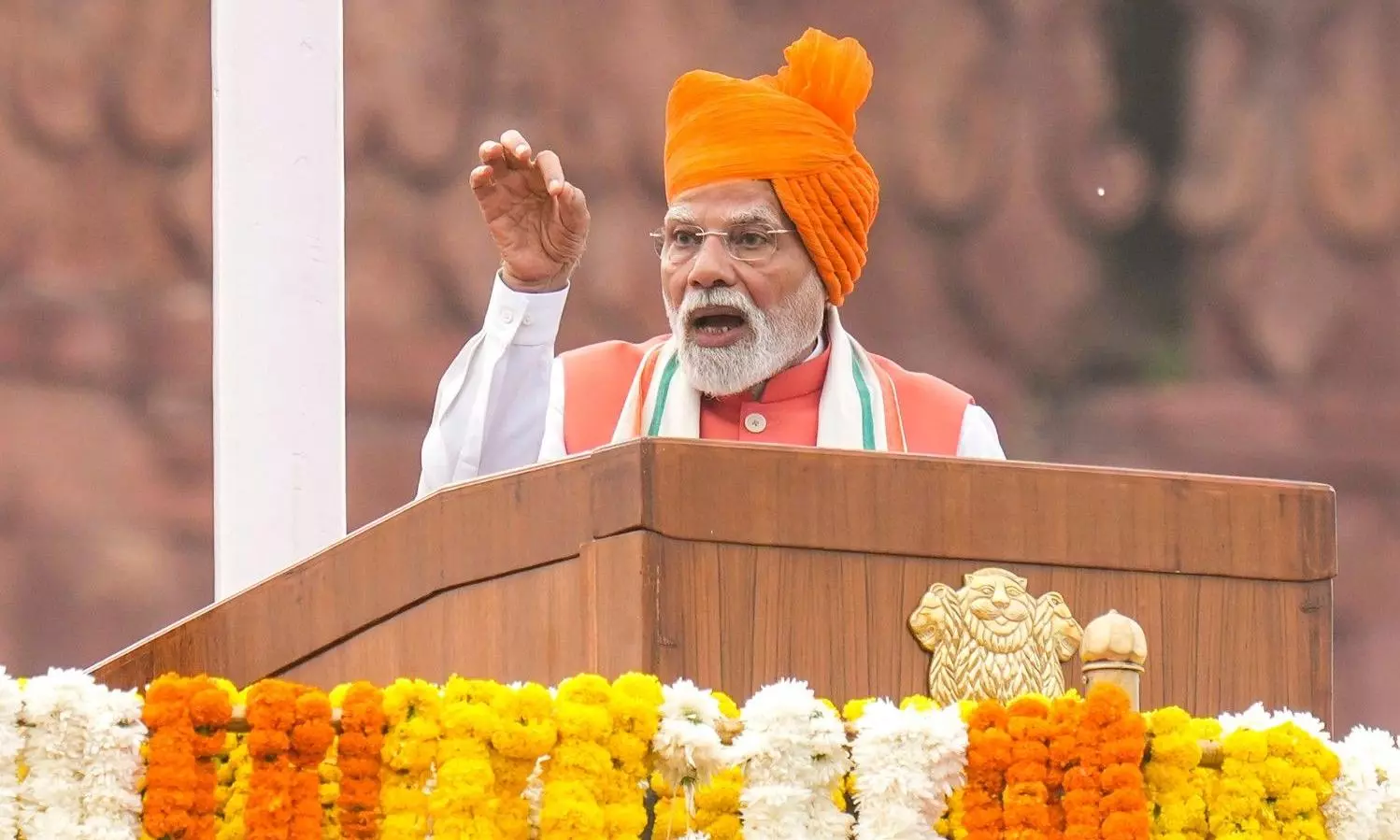
From pandemic recovery to security onslaught: Comparing Modi’s I-day speeches last 5 years
Modi's address builds upon and broadens the themes he has championed over the years, besides presenting responses to emerging national and global challenges and threats

Prime Minister Narendra Modi’s 2025 Independence Day address on Friday (August 15) continued his focus on self-reliance, national security, and the vision for a developed India, while reflecting the evolving context of both domestic and global challenges.
From the pandemic-hit 2020 to the strategically assertive 2025, over the last five years, Modi’s Independence Day speeches have charted a consistent course of national unity and a long-term vision of building a strong India, besides a steady layering of policy ambitions over a core ideological framework. Interestingly, Modi did not mention Donald Trump's steep tariffs directly, although he explained why self-reliance is so vital at the moment.
Also Read: PM Modi warns Pak, unveils GST reforms, vows to achieve Viksit Bharat by 2047 in I-Day speech
2020–2021: Laying groundwork for Aatmanirbhar Bharat
The 2020 address, delivered amid COVID crisis, was defined by urgency and resilience. Modi introduced “Make in India, Make for the World” as the central recovery strategy, saluted frontline workers, and launched the National Digital Health Mission. Self-reliance was framed as both an economic necessity and a strategic imperative.
In 2021, the tone shifted from immediate crisis management to long-term planning with the announcement of the ‘Amrit Kaal’ — a 25-year roadmap to 2047. The speech amplified the “Sabka Saath, Sabka Vikas, Sabka Vishwas, Sabka Prayas” mantra, linking Aatmanirbhar Bharat to inclusive development. Partition Horror Remembrance Day was instituted, signalling an emphasis on historical memory alongside development goals.
2022–2023: Ideological anchors and social cohesion
The 2022 address, marking 75 years of independence, introduced the Panch Pran (five vows), urging citizens to commit to unity, development, and the removal of colonial mindsets. Corruption and dynastic politics were identified as barriers to progress. The tone balanced celebration with a call for continued vigilance.
In 2023, Modi addressed the Manipur violence, though he did not visit the state even during the peak of violence, reflecting his willingness to confront sensitive internal issues. Global recognition of India’s stature was accompanied by initiatives like the Vishwakarma Yojana, aimed at empowering traditional artisans. Women-led development emerged as a core theme, positioning social cohesion as integral to achieving “Viksit Bharat 2047”.
Also Read: Anganwadi workers, children from PM Cares centres to be special guests at Red Fort on I-Day
2024–2025: Strategic ambition and policy consolidation
By 2024, Modi’s Independence Day speech had grown into his longest, with a strong reformist thrust. Major governance changes affecting the middle class, farmers, and the poor were highlighted, alongside pitches for a Uniform Civil Code and “one nation, one election.” Agricultural reforms and minority rights in neighbouring Bangladesh also featured, underscoring a blend of domestic and foreign policy priorities.
The 2025 address further sharpened strategic themes. Operation Sindoor was showcased as proof of India’s defence capabilities, while a tougher stance on the Indus Waters Treaty signalled a hardened security posture towards Pakistan. Modi reiterated that “Atmanirbhar Bharat” underpins “Viksit Bharat,” citing defence manufacturing, space exploration, and critical minerals as success areas. New missions, including Mission Sudarshan Chakra, were announced, and calls for technological innovation and youth-driven transformation by 2047 were prominent.
In 2024, major governance changes affecting the middle class, farmers, and the poor were highlighted, alongside pitches for a Uniform Civil Code and “one nation, one election.”
Ideology, nation-building and roadmaps
Over the last five years, Modi’s Independence Day speeches reveal a consistent ideological arc centered on self-reliance, national unity, and a centenary vision for 2047. While 2020–2021 focused on economic resilience and developmental roadmaps, 2022–2023 emphasised social cohesion and historical consciousness.
Also Read: How Hindi cinema’s patriotic songs have stirred India’s heart since Independence
By 2024–2025, the narrative had expanded to assertive strategic policies, broad reforms, and global positioning.
The continuity of themes — particularly Aatmanirbhar Bharat — suggests a deliberate effort to link annual messaging to a single, long-term national mission. Yet the evolving specifics reflect an adaptive approach, aligning the Independence Day platform with the immediate political and geopolitical climate.

